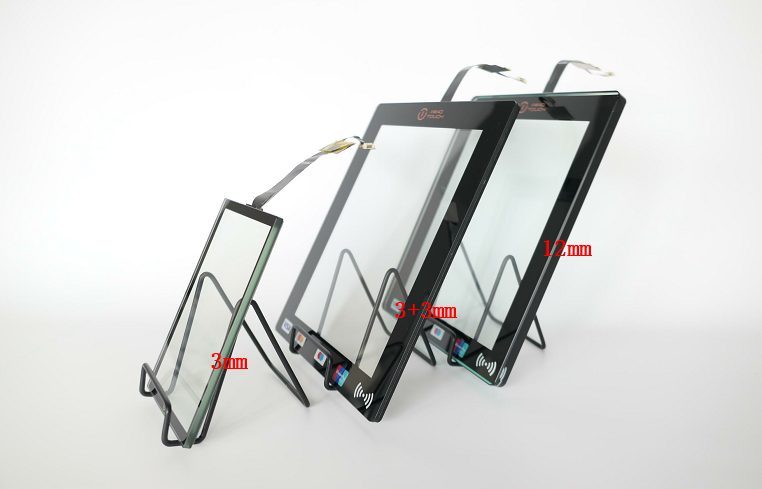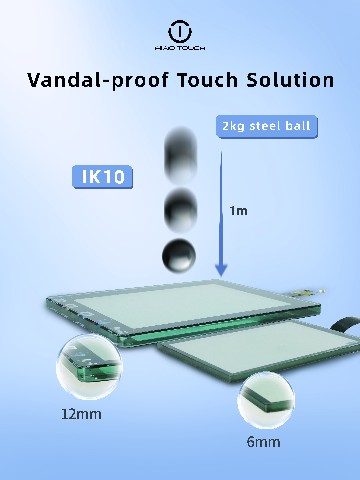The common glass cover thickness of capacitive touch screen is introduced:
The cover thickness of capacitive touch screen is diversified, mainly depending on the application scenario, size and customer demand of the touch screen. Generally speaking, common cover glass thicknesses include 0.55mm, 0.7mm, 1.1mm, 1.8mm and so on. These thickness values are set to balance the durability, light transmission and overall aesthetics of the touchscreen. For example, in industrial applications, larger touchscreens may have thicker cover glass, such as 2.0mm, 3.0mm, 6mm, 8mm, 10mm, 12mm, to enhance their structural strength and impact resistance.
In addition to single-layer glass cover, we also support customised double-layer glass cover, such as 2+2mm, 3+3mm, 4+4mm, 5+5mm, 6+6mm. double-layer glass structure is better in terms of impact resistance and scratch resistance compared to single-layer glass. Even if it is impacted or scratched by external forces, it can effectively protect the internal touch screen from damage and prolong the service life of the device.

Introduction to the thickness of glass touch function sheet:
The touch function sheet is one of the core parts of capacitive touch screen, and its thickness is relatively thin to achieve high light transmission and sensitivity. Ultra-thin capacitive touch screen function piece through the optimisation of structural design, the overall thickness can be made thinner, for example, to reach 0.4mm or so, while the traditional technology is more common in the thickness of the function piece is usually 0.55mm, 0.7mm, 1.1mm, 1.8mm. this ultra-thin design not only improves the feel of use, but also conducive to the development of thin touch screen electronic products.
The total thickness of capacitive touch screen is introduced:
The total thickness of capacitive touch screen is determined by the thickness of the cover plate, the thickness of the touch function sheet, and the thickness of the adhesive layer between them. Since capacitive touchscreens from different manufacturers and models differ in design and material selection, their total thickness may vary. In general, the total thickness of capacitive touchscreens used in modern consumer electronics, such as smartphones and tablets, is thinner and lighter to meet the need for portability and aesthetics. If you don't know how to choose, you can contact us (email: sales03@wiwotouch.com), we have professional engineers who can provide you with excellent solutions.
Touch screen thickness support customisation brings multiple benefits:
1. Meet diversified needs: different application scenarios have different requirements for touch screen thickness. For example, industrial touch panels may require thicker covers to enhance durability, while consumer electronics pursue thinner and lighter designs. Customised thickness can meet these diverse needs.
2. Optimise performance: By customising the thickness of a touchscreen, performance metrics such as light transmission, sensitivity and responsiveness can be optimised while maintaining structural strength. For example, a thinner cover glass can improve light transmission, while a thicker cover glass can provide a better impact resistance rating.

3. Enhance user experience: Customising the thickness of the touchscreen can help to enhance the user experience. For example, in devices that require long handheld operation, a thinner touch screen can reduce the burden on the hand; and in scenarios that require high durability, a thicker touch screen can provide better protection.
4. Enhance product competitiveness: Providing customisation services enables manufacturers to better meet customer needs, thereby enhancing product market competitiveness and brand image.


